Comprehensive Guide to Shoulder Anatomy and Conditions
Do you suffer from shoulder problems or conditions? Whether it’s an old sports injury that still lingers, a recent injury that is causing you problems, or simply wear and tear, suffering from a shoulder condition is painful and debilitating.
To help you discuss shoulder conditions and treatment options with your surgeon, here’s a breakdown of the anatomy of the shoulder.
Guía Integral de la Anatomía y Condiciones del Hombro
¿Sufre de problemas o condiciones en el hombro? Ya sea una antigua lesión deportiva que aún persiste, una lesión reciente que le está causando molestias, o simplemente el desgaste natural, padecer de una condición en el hombro es doloroso y debilitante.
Para ayudarle a conversar sobre las condiciones del hombro y las opciones de tratamiento con su cirujano, aquí tiene un desglose de la anatomía del hombro.
- AnatomyAnatomía
- Conditions Condiciones
- Procedures Cirugías
Shoulder Anatomy
The shoulder is the most flexible joint in the body, which enables it to perform a wide range of movements, including: forward flexion, abduction, adduction, external rotation, internal rotation, and 360-degree circumduction. This versatility comes at a price, because the shoulder joint is the most insecure joint of the body. Ligaments, muscles, tendons, and bones provide stability and support, but if any of those become damaged or injured, it can be extremely painful and debilitating
Bones of the Shoulder
The shoulder joint is a ball and socket joint made up of three bones:
Humerus
The humerus, or upper arm bone, forms the ball of the shoulder joint. The head of the humerus fits into an irregular shallow cavity in the scapula called the glenoid cavity. The two bones together form the glenohumeral joint, which is the main joint of the shoulder.
Scapula
The scapula is a flat triangular-shaped bone that forms the shoulder blade. It serves as the site of attachment for most of the muscles that provide movement and stability to the joint.
Clavicle
The clavicle, or collarbone, is an S-shaped bone that connects the scapula to the sternum (or breastbone). The clavicle also forms a protective covering for important nerves and blood vessels that pass under it from the spine to the arms.
Soft Tissues of the Shoulder
The ends of all articulating bones are covered by smooth tissue called articular cartilage. Articular cartilage enables smooth movement, reduces pressure, and acts as a shock absorber during movement of the shoulder bones. The glenoid labrum provides extra stability, and increases the depth and surface area of the glenoid cavity, providing a more secure fit.
Ligaments of the Shoulder
Ligaments are thick strands of fibers that connect one bone to another. The shoulder has four types of ligaments:
- Coracoclavicular ligaments connect the collarbone to the shoulder blade at the coracoid process.
- Acromioclavicular ligament connects the collarbone to the shoulder blade at the acromion process.
- Coracoacromial ligament connects the acromion process to the coracoid process.
- Glenohumeral ligaments connect the head of the arm bone to the glenoid cavity of the shoulder blade, providing stability.
Muscles of the Shoulder
The rotator cuff is a group of four muscles that form a sleeve around the humeral head and glenoid cavity, providing stability and mobility. The deltoid muscle forms the outer layer of the rotator cuff and is the largest and strongest muscle of the shoulder joint.
Tendons of the Shoulder
Tendons join muscle to bone allowing the muscle to control the movement of the bone or joint. There are two groups of tendons in the shoulder joint:
- Bicep tendons are the two tendons that join the bicep muscle of the upper arm to the shoulder.
- Rotator cuff tendons are four tendons that join the head of the humerus to the muscles of the rotator cuff.
Nerves of the Shoulder
The nerves of the arm pass through the shoulder joint from the neck. These nerves form a bundle at the region of the shoulder called the brachial plexus and include the musculocutaneous, axillary, radial, ulnar, and median nerves.
Blood Vessels of the Shoulder
The subclavian artery supplies oxygenated blood to the shoulder region. As it enters the region of the armpit, it is called the axillary artery as it enters the region of the armpit and the brachial artery further down the arm.
Three veins carrying deoxygenated blood back to the heart:
- The axillary vein drains into the subclavian vein.
- The cephalic vein branches at the elbow into the forearm region and drains into the axillary vein.
- The basilic vein runs opposite the cephalic vein, near the triceps muscle. It drains into the axillary vein.
Now that you know the anatomy of the shoulder, see how we’re prepared to help solve your shoulder problems and conditions.
Anatomía del Hombro
El hombro es la articulación más flexible del cuerpo, lo que le permite realizar una amplia gama de movimientos, incluyendo: flexión hacia adelante, abducción, aducción, rotación externa, rotación interna y circunducción de 360 grados. Esta versatilidad tiene un precio, ya que la articulación del hombro es la más inestable del cuerpo. Los ligamentos, músculos, tendones y huesos brindan estabilidad y soporte, pero si alguno de ellos se daña o lesiona, puede ser extremadamente doloroso y debilitante.
Huesos del Hombro
La articulación del hombro es una articulación esférica formada por tres huesos:
Húmero
El húmero, o hueso del brazo superior, forma la esfera de la articulación del hombro. La cabeza del húmero encaja en una cavidad irregular y poco profunda de la escápula llamada cavidad glenoidea. Los dos huesos juntos forman la articulación glenohumeral, que es la articulación principal del hombro.
Escápula
La escápula es un hueso plano con forma triangular que forma el omóplato. Sirve como punto de unión para la mayoría de los músculos que proporcionan movimiento y estabilidad a la articulación.
Clavícula
La clavícula, o hueso de la clavícula, es un hueso en forma de S que conecta la escápula con el esternón (o hueso del pecho). La clavícula también forma una cubierta protectora para nervios y vasos sanguíneos importantes que pasan por debajo de ella desde la columna hasta los brazos.
Tejidos Blandos del Hombro
Los extremos de todos los huesos que articulan están cubiertos por un tejido liso llamado cartílago articular. El cartílago articular permite un movimiento suave, reduce la presión y actúa como amortiguador durante el movimiento de los huesos del hombro. El labrum glenoideo proporciona estabilidad adicional, y aumenta la profundidad y superficie de la cavidad glenoidea, brindando un ajuste más seguro.
Ligamentos del Hombro
Los ligamentos son gruesas bandas de fibras que conectan un hueso con otro. El hombro tiene cuatro tipos de ligamentos:
- Ligamentos coracoclaviculares: conectan la clavícula con la escápula en el proceso coracoides.
- Ligamento acromioclavicular: conecta la clavícula con la escápula en el proceso acromion.
- Ligamento coracoacromial: conecta el proceso acromion con el proceso coracoides.
- Ligamentos glenohumerales: conectan la cabeza del hueso del brazo con la cavidad glenoidea de la escápula, proporcionando estabilidad.
Músculos del Hombro
El manguito rotador es un grupo de cuatro músculos que forman una envoltura alrededor de la cabeza humeral y la cavidad glenoidea, proporcionando estabilidad y movilidad. El músculo deltoides forma la capa externa del manguito rotador y es el músculo más grande y fuerte de la articulación del hombro.
Tendones del Hombro
Los tendones unen el músculo al hueso, permitiendo que el músculo controle el movimiento del hueso o de la articulación. Hay dos grupos de tendones en la articulación del hombro:
- Tendones del bíceps: son los dos tendones que unen el músculo bíceps del brazo superior al hombro.
- Tendones del manguito rotador: son cuatro tendones que unen la cabeza del húmero a los músculos del manguito rotador.
Nervios del Hombro
Los nervios del brazo pasan por la articulación del hombro desde el cuello. Estos nervios forman un conjunto en la región del hombro llamado plexo braquial e incluyen los nervios musculocutáneo, axilar, radial, cubital y mediano.
Vasos Sanguíneos del Hombro
La arteria subclavia suministra sangre oxigenada a la región del hombro. Al entrar en la región de la axila, se llama arteria axilar y más abajo en el brazo, arteria braquial.
Tres venas llevan sangre desoxigenada de regreso al corazón:
- La vena axilardrena hacia la vena subclavia.
- La vena cefálicase ramifica en el codo hacia la región del antebrazo y drena en la vena axilar.
- La vena basílicacorre opuesta a la vena cefálica, cerca del músculo tríceps. Drena en la vena axilar.
Ahora que conoce la anatomía del hombro, vea cómo estamos preparados para ayudarle a resolver sus problemas y condiciones del hombro.

Shoulder Pain
Pain in the shoulder may suggest an injury, which is more common in athletes participating in sports such as swimming, tennis, pitching, and weightlifting. The injuries are caused due to the over usage or repetitive motion of the arms.
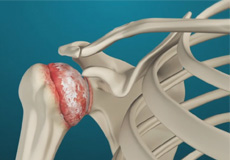
Arthritis Of The Shoulder
The term arthritis literally means inflammation of a joint but is generally used to describe any condition in which there is damage to the cartilage. Damage of the cartilage in the shoulder joint causes shoulder arthritis. Inflammation is the body's natural response to injury. The warning signs that inflammation presents are redness, swelling, heat, and pain.

Rotator Cuff Tear
A rotator cuff is a group of tendons in the shoulder joint that provides support and enables a wide range of motion. A major injury to these tendons may result in rotator cuff tears. It is one of the most common causes of shoulder pain in middle-aged and older individuals.

Frozen Shoulder
Frozen shoulder, also called adhesive capsulitis, is a condition in which you experience pain and stiffness in your shoulder. The symptoms appear slowly, worsen gradually and usually take one to three years to resolve on their own.

Shoulder Dislocation
The shoulder joint is a ball and socket joint. A ball at the top of the upper arm bone (humerus) fits neatly into a socket, called the glenoid, which is part of the shoulder blade (scapula). The glenoid is surrounded by a ring of fibrous cartilage called the labrum for stabilization of the shoulder joint.

Shoulder Instability
Shoulder instability is a chronic condition that causes frequent dislocation of the shoulder joint.

Shoulder Impingement
The shoulder is a ball-and-socket joint. The ball-shaped end of the upper arm bone (humerus) fits neatly into a socket, called the glenoid, which is part of the shoulder blade or scapula.
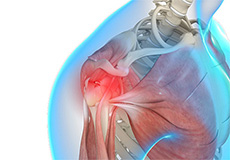
Shoulder Trauma
Shoulder injuries most commonly occur in athletes participating in sports such as swimming, tennis, pitching, and weightlifting. The injuries are caused due to the over usage or repetitive motion of the arms.

SLAP Tears
The shoulder joint is a ball and socket joint. A ball at the top of the upper arm bone (humerus) fits neatly into a socket, called the glenoid, which is part of the shoulder blade (scapula). The glenoid is surrounded by a ring of fibrous cartilage called the labrum for stabilization of the shoulder joint. The biceps tendon attaches inside the shoulder joint at the superior labrum of the shoulder joint.
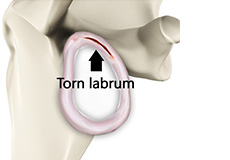
Shoulder Labral Tear
The shoulder joint is a ball and socket joint. A ball at the top of the upper arm bone (humerus) fits neatly into a socket, called the glenoid, which is part of the shoulder blade (scapula). The glenoid is surrounded by a ring of fibrous cartilage called the labrum for stabilization of the shoulder joint. The biceps tendon attaches inside the shoulder joint at the superior labrum of the shoulder joint.
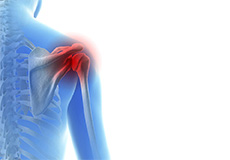
Baseball And Shoulder Injuries
The shoulder is a ball and socket joint, formed by the bone of the upper arm (humerus), which articulates with the shoulder blade in a cavity called the glenoid fossa.
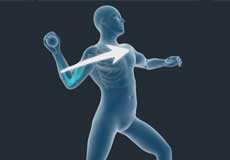
Overhead Athlete's Shoulder
An overhead athlete is at increased risk of injury due to the mechanism associated with rapid shoulder elevation, external rotation, and abduction. An overhead throwing motion is an intricate and skillful movement that presents a special challenge of needing the glenohumeral joint to surpass its physiologic limits during overhead sports activities.
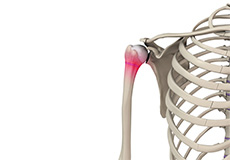
Little League Shoulder
The upper arm bone is called the humerus. It forms the shoulder joint at the upper end and elbows joint at the lower end. In children, the bone continues from a region called the growth plate, which is found at the ends of the bone. This is a region of cartilage cells, which are still soft. In time, they mature and harden to form the adult bone.

Clavicle Fracture
The break or fracture of the clavicle (collarbone) is a common sports injury associated with contact sports such as football and martial arts, as well as impact sports such as motor racing. A direct blow over the shoulder that may occur during a fall on an outstretched arm or a motor vehicle accident may cause the clavicle bone to break.
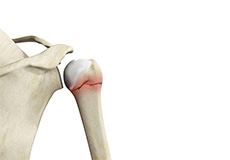
Shoulder Fracture
The shoulder is the most flexible joint in the body, enabling a wide range of movements. It is a ball-and-socket joint made up of three bones, namely the humerus (upper arm bone), scapula (shoulder blade) and clavicle. The head of the humerus articulates with the socket of the scapula called the glenoid cavity.
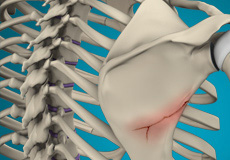
Fracture Of The Shoulder Blade (Scapula)
The scapula (shoulder blade) is a flat, triangular bone providing attachment to the muscles of the back, neck, chest and arm. The scapula has a body, neck and spine portion.
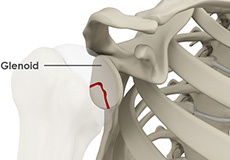
Glenoid Fractures
The shoulder joint is a ball and socket joint. A ball at the top of the upper arm bone (humerus) fits neatly into a socket, called the glenoid, which is part of the shoulder blade (scapula). The glenoid is surrounded by a ring of fibrous cartilage called the labrum for stabilization of the shoulder joint.
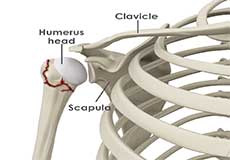
Proximal Humerus Fractures
The humerus is the bone that forms the upper arm. It articulates with the glenoid cavity of the scapula (shoulder blade) to form the shoulder joint and with the lower arm bones - the ulna and radius - to form the elbow joint. The proximal humerus is the upper end of the arm bone that forms the shoulder joint.
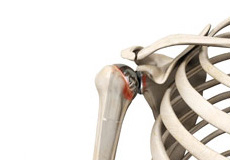
Periprosthetic Shoulder Infection
A periprosthetic shoulder joint infection is a very rare, but devastating complication of shoulder replacement surgery characterized by infection of the tissues surrounding your shoulder prosthesis.
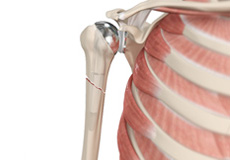
Periprosthetic Shoulder Fracture
A periprosthetic shoulder fracture is a fracture that occurs in the bone adjacent to a shoulder prosthesis.
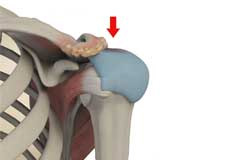
Subacromial Impingement Syndrome
SAIS is the inflammation and irritation of your rotator cuff tendons. This occurs when the tendons rub against the outer end of the shoulder blade (the acromion) while passing through the subacromial space during shoulder movement.
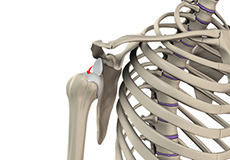
Posterior Shoulder Instability
Posterior shoulder instability, also known as posterior glenohumeral instability, is a condition in which the head of the humerus (upper arm bone) dislocates or subluxes posteriorly from the glenoid (socket portion of the shoulder) as a result of significant trauma.
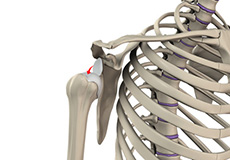
Anterior Shoulder Instability
Anterior shoulder instability, also known as anterior glenohumeral instability, is a condition in which damage to the soft tissues or bone causes the head of the humerus (upper arm bone) to dislocate or sublux from the glenoid fossa, compromising the function of the shoulder.
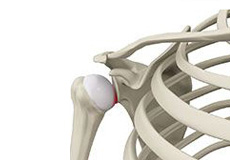
Subluxation
The shoulder is a highly mobile ball and socket joint. The ball of the upper arm bone (humerus) is held in place at the socket (glenoid) of the shoulder blade (scapula) by a group of ligaments. A partial dislocation of the shoulder joint is termed as a subluxation.
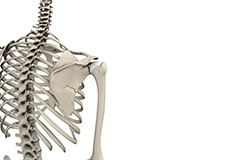
Snapping Scapula
Snapping scapula or snapping scapula syndrome is also known as scapulothoracic syndrome or scapulocostal syndrome. It is a condition characterized by painful clicking, snapping, or grinding of the shoulder blade. The sound occurs as a result of rubbing of soft tissues between the thoracic wall and the scapula.
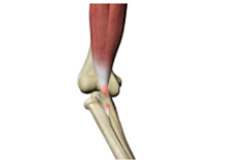
Bicep Tendon Rupture At Shoulder
The biceps muscle is present on the front of your upper arm and functions to help you bend and rotate your arm. The biceps tendon is a tough band of connective fibrous tissue that attaches your biceps muscle to the bones in your shoulder on one side and the elbow on the other side.
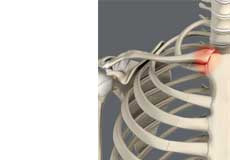
Sternoclavicular Joint (SC joint)
The sternoclavicular joint is the joint between the breastbone (sternum) and the collar bone (clavicle). The SC joint is one of the 4 joints that complete the shoulder and is the only joint that links the arm to the body.
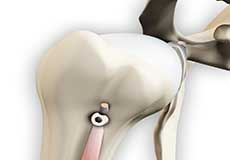
Proximal Biceps Tendinitis
Proximal biceps tendinitis is the irritation and inflammation of the biceps tendon at the shoulder joint. The biceps muscle is the muscle of the upper arm which is necessary for the movement of the shoulder and elbow. It is made of a 'short head' and a 'long head' which function together.
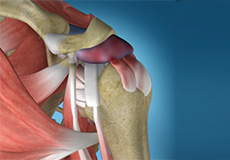
Internal Impingement Of The Shoulder
Internal shoulder impingement can be described as a pathological condition resulting from repetitive impingement of the internal surface of the rotator cuff by the bones at the back of the glenohumeral joint.
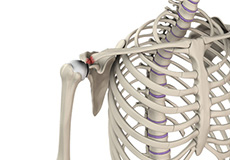
AC Joint Separation
AC joint separation, also known as shoulder separation, is a condition characterized by damage to the ligaments that connect the acromion to the collar bone. As a result, the bones do not line up properly, causing joint pain and instability.

Shoulder Tendonitis
Shoulder tendonitis is a condition characterized by inflammation of the tendons which connect the muscles to the shoulder bones. Tendonitis of the rotator cuff tendons is known as rotator cuff tendonitis. If the biceps tendon is affected, the condition is known as bicipital tendonitis.
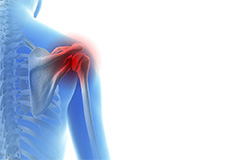
Throwing Injuries Of The Shoulder
Throwing injuries of the shoulder are injuries sustained as a result of trauma by athletes during sports activities that involve repetitive overhand motions of the arm as in baseball, American football, volleyball, rugby, tennis, track and field events, etc.

Acromioclavicular (AC) Arthritis
The acromioclavicular joint is part of the shoulder joint. It is formed by the union of the acromion, a bony process of the shoulder blade, and the outer end of the collar bone or clavicle. The joint is lined by cartilage that gradually wears with age as well as with repeated overhead or shoulder level activities such as basketball.
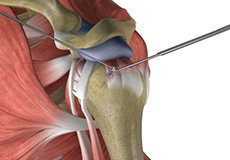
Rotator Cuff Calcification
Rotator cuff calcification is the abnormal accumulation of calcium deposits in rotator cuff muscles and tendons. The rotator cuff is a group of 4 muscles and tendons in the shoulder joint that join the head of the humerus to the shoulder. It forms a sleeve around the humeral head and glenoid cavity, providing additional stability to the shoulder joint while enabling a wide range of mobility.

Shoulder Disorders
The shoulder is the most flexible joint in the body that enables a wide range of movements. Aging, trauma or sports activities can cause injuries and disorders that can range from minor sprains or strains to severe shoulder trauma.
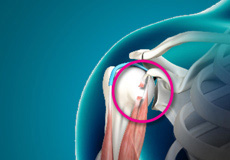
Bicep Tendon Rupture
The biceps muscle is located in the front side of your upper arm and functions to help you bend and rotate your arm.
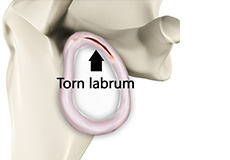
Shoulder Labral Tear with Instability
The shoulder consists of a ball-and-socket joint formed by the upper end of the humerus (upper arm bone) and a cavity in the shoulder blade called the glenoid. The glenoid cavity is surrounded by a rim of cartilage called the labrum.
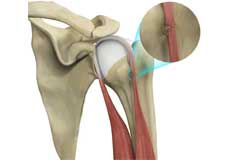
Proximal Biceps Tendon Rupture
The biceps muscle is the muscle of the upper arm which is necessary for the movement of the shoulder and elbow. It is made of a 'short head' and a 'long head' which function together. These are connected to the shoulder joint by two tendons called the proximal biceps tendons and to the elbow joint by a single distal biceps tendon.
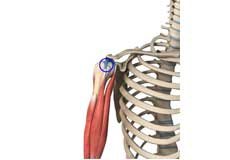
Long Head Biceps Tendon Rupture
Your biceps muscle has two heads, a long head, and a short head, which are both attached to the shoulder. The long head of the biceps tendon is a tough band of connective fibrous tissue that attaches the long head of the biceps to the top of the shoulder socket.
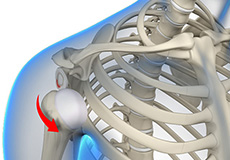
Multidirectional Instability of the Shoulder
The shoulder consists of a ball and socket joint where the rounded end of the humerus (upper arm bone) fits into a socket (glenoid cavity) formed by the shoulder blade. The joint is stabilized by the surrounding capsule, ligaments, and tendons of the rotator cuff muscles. Shoulder instability results when the humerus is not held firmly within the socket and moves away from the glenoid cavity.

Hill-sachs Lesion
Your shoulder consists of a 'ball-and-socket joint'. The humerus (upper arm bone) has a rounded head (ball) that is attached to the glenoid cavity (socket) in the shoulder blade. Certain injuries can cause dislocation of the joint and damage to the humeral head. Damage to the back and outer portion of the humeral head can result in a defect called a Hill-Sachs lesion.

Ac Joint Dislocation/acromioclavicular Joint Dislocation
A dislocation occurs when the ends of your bones are partially or completely moved out of their normal position in a joint. A partial dislocation is referred to as a subluxation, whereas a complete separation is referred to as a dislocation.
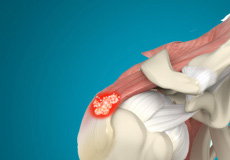
Calcification Tendinitis
Calcification tendinitis is a problem with the shoulder's tendons and muscles. This condition occurs due to the formation of calcium deposits in the tendons (tissue which attaches muscle to bone) of the rotator cuff (a group of muscles and tendons stabilizing the shoulder).
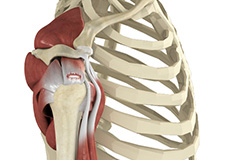
Rotator Cuff Pain
The rotator cuff consists of a group of tendons and muscles that surround and stabilize the shoulder joint. These tendons allow a wide range of movement of the shoulder joint across multiple planes. Irritation or injury to these tendons can result in rotator cuff pain.

Anatomic Shoulder Replacement
Arthritis of the shoulder can cause pain, swelling and stiffness in the joint. The condition is treated by removing the damaged articulating parts and replacing them with prostheses.

Dolor de Hombro
El dolor en el hombro puede sugerir una lesión, lo cual es más común en los atletas que participan en deportes como natación, tenis, lanzamiento de béisbol y levantamiento de pesas. Las lesiones son causadas por el uso excesivo o el movimiento repetitivo de los brazos.

Artritis del Hombro
El término artritis literalmente significa inflamación de una articulación, pero generalmente se utiliza para describir cualquier condición en la que exista daño en el cartílago. El daño del cartílago en la articulación del hombro causa artritis del hombro. La inflamación es la respuesta natural del cuerpo a una lesión.

Desgarro del Manguito Rotador
Un manguito rotador es un grupo de tendones en la articulación del hombro que proporciona soporte y permite un amplio rango de movimiento. Una lesión importante en estos tendones puede resultar en desgarros del manguito rotador.

Hombro Congelado
El hombro congelado, también llamado capsulitis adhesiva, es una condición en la que se experimenta dolor y rigidez en el hombro. Los síntomas aparecen lentamente, empeoran gradualmente y generalmente tardan de uno a tres años en resolverse por sí solos.

Luxación de Hombro
La articulación del hombro es una articulación esférica. Una bola en la parte superior del hueso del brazo (húmero) encaja perfectamente en una cavidad, llamada glenoides, que es parte del omóplato (escápula). El glenoides está rodeado por un anillo de cartílago fibroso llamado labrum para la estabilización de la articulación del hombro.

Inestabilidad del Hombro
La inestabilidad del hombro es una condición crónica que causa luxaciones frecuentes de la articulación del hombro.

Pinzamiento del Hombro
El hombro es una articulación en forma de bola y cavidad. El extremo en forma de bola del hueso del brazo superior (húmero) encaja perfectamente en una cavidad llamada glenoides, que forma parte de la escápula o omóplato.

Trauma de Hombro
Las lesiones de hombro ocurren con mayor frecuencia en atletas que participan en deportes como natación, tenis, lanzamiento y levantamiento de pesas. Las lesiones son causadas por el uso excesivo o movimientos repetitivos de los brazos.

Desgarros Labrum Superior Anterior y Posterior (SLAP)
La articulación del hombro es una articulación de tipo bola y cavidad. Una bola en la parte superior del hueso del brazo (húmero) encaja perfectamente en una cavidad, llamada glenoides, que forma parte de la escápula (omóplato). La glenoides está rodeada por un anillo de cartílago fibroso llamado labrum, que estabiliza la articulación del hombro.

Desgarro del Labrum del Hombro
La articulación del hombro es una articulación de tipo bola y cavidad. Una bola en la parte superior del hueso del brazo (húmero) encaja perfectamente en una cavidad, llamada glenoides, que forma parte de la escápula (omóplato). La glenoides está rodeada por un anillo de cartílago fibroso llamado labrum, que estabiliza la articulación del hombro.

Béisbol y Lesiones de Hombro
La articulación del hombro es una articulación de tipo bola y cavidad, formada por el hueso del brazo superior (húmero), que se articula con la escápula en una cavidad llamada fosa glenoidea.

Hombro del Atleta de Lanzamiento
Un atleta que realiza movimientos por encima de la cabeza está en mayor riesgo de lesión debido al mecanismo asociado con la elevación rápida del hombro, rotación externa y abducción. El movimiento de lanzamiento por encima de la cabeza es un movimiento complejo y hábil que presenta un desafío especial, ya que requiere que la articulación glenohumeral supere sus límites fisiológicos durante actividades deportivas por encima de la cabeza.

Hombro de las Ligas Menores
El hueso del brazo superior se llama húmero. Forma la articulación del hombro en su extremo superior y la articulación del codo en su extremo inferior. En los niños, el hueso continúa desde una región llamada placa de crecimiento, que se encuentra en los extremos del hueso. Esta es una región de células cartilaginosas, que todavía son blandas.

Fractura de Clavícula
La rotura o fractura de la clavícula (hueso del cuello) es una lesión deportiva común asociada con deportes de contacto como el fútbol y las artes marciales, así como con deportes de impacto como las carreras de motor. Un golpe directo sobre el hombro que puede ocurrir durante una caída sobre un brazo extendido o un accidente de vehículo motorizado puede causar la fractura del hueso de la clavícula.

Fractura de Hombro
El hombro es la articulación más flexible del cuerpo, lo que permite una amplia gama de movimientos. Es una articulación de tipo esférica y cavidad (bola y receptáculo) formada por tres huesos: el húmero (hueso del brazo superior), la escápula (omóplato) y la clavícula. La cabeza del húmero articula con la cavidad de la escápula llamada cavidad glenoidea. El hueso de la clavícula o clavícula es un hueso en forma de S que conecta la escápula con el esternón o hueso del pecho.

Fractura del Omóplato (Escápula)
La escápula (omóplato) es un hueso plano y triangular que proporciona inserción a los músculos de la espalda, el cuello, el pecho y el brazo. La escápula tiene una porción de cuerpo, cuello y espina.

Fracturas de la Glenoides
La articulación del hombro es una articulación esférica. Una bola en la parte superior del hueso del brazo (húmero) encaja perfectamente en una cavidad llamada glenoides, que forma parte del omóplato (escápula). La glenoides está rodeada por un anillo de cartílago fibroso llamado labrum, que proporciona estabilidad a la articulación del hombro.

Fracturas del Húmero Proximal
El húmero es el hueso que forma la parte superior del brazo. Se articula con la cavidad glenoidea de la escápula (omóplato) para formar la articulación del hombro y con los huesos del antebrazo - el cúbito y el radio - para formar la articulación del codo. El húmero proximal es el extremo superior del hueso del brazo que forma la articulación del hombro. El húmero se divide ampliamente en la cabeza, el cuello y la región del cuerpo.

Infección Periprotésica de Hombro
Una infección articular periprotésica de hombro es una complicación muy rara, pero devastadora de la cirugía de reemplazo de hombro, caracterizada por la infección de los tejidos que rodean su prótesis de hombro.

Fractura Periprotésica de Hombro
Una fractura periprotésica de hombro es una fractura que ocurre en el hueso adyacente a una prótesis de hombro.

Síndrome de Pinzamiento Subacromial
El Síndrome de Pinzamiento Subacromial es la inflamación e irritación de los tendones del manguito rotador. Esto ocurre cuando los tendones se rozan contra el extremo externo del omóplato (el acromion) mientras pasan a través del espacio subacromial durante el movimiento del hombro.

Inestabilidad Posterior del Hombro
La inestabilidad posterior del hombro, también conocida como inestabilidad glenohumeral posterior, es una condición en la cual la cabeza del húmero (hueso de la parte superior del brazo) se disloca o subluxa posteriormente desde la glenoides (parte de la cavidad del hombro) como resultado de un trauma significativo.

Inestabilidad Posterior del Hombro
La inestabilidad posterior del hombro, también conocida como inestabilidad glenohumeral posterior, es una condición en la cual la cabeza del húmero (hueso de la parte superior del brazo) se disloca o subluxa posteriormente desde la glenoides (parte de la cavidad del hombro) como resultado de un trauma significativo.

Subluxación
El hombro es una articulación de bola y cavidad altamente móvil. La bola del hueso del brazo superior (húmero) se mantiene en su lugar en la cavidad (glenoides) de la escápula (omóplato) por un grupo de ligamentos. Una dislocación parcial de la articulación del hombro se denomina subluxación.

Escápula Chasqueante
La escápula chasqueante o síndrome de escápula chasqueante también se conoce como síndrome escapulotorácico o síndrome escapulocostal. Es una condición caracterizada por un chasquido, crujido o roce doloroso de la escápula. El sonido ocurre como resultado del roce de los tejidos blandos entre la pared torácica y la escápula.

Ruptura del Tendón del Bíceps en el Hombro
El músculo bíceps se encuentra en la parte frontal de su brazo superior y funciona para ayudarlo a doblar y rotar el brazo. El tendón del bíceps es una banda resistente de tejido fibroso conectivo que une el músculo bíceps a los huesos del hombro por un lado y al codo por el otro.

Articulación Esternoclavicular
La articulación esternoclavicular es la articulación entre el esternón (hueso del pecho) y la clavícula (hueso de la clavícula). La articulación esternoclavicular es una de las 4 articulaciones que completan el hombro y es la única articulación que conecta el brazo con el cuerpo.

Tendinitis Proximal del Bíceps
La tendinitis proximal del bíceps es la irritación e inflamación del tendón del bíceps en la articulación del hombro. El músculo bíceps es el músculo del brazo superior que es necesario para el movimiento del hombro y el codo. Está compuesto por una “cabeza corta” y una “cabeza larga” que funcionan conjuntamente.

Pinzamiento Interno del Hombro
El pinzamiento interno del hombro puede describirse como una condición patológica que resulta del pinzamiento repetitivo de la superficie interna del manguito rotador por los huesos en la parte posterior de la articulación glenohumeral.

Separación de la Articulación Acromioclavicular
La separación de la articulación acromioclavicular, también conocida como separación del hombro, es una condición caracterizada por el daño a los ligamentos que conectan el acromion con la clavícula. Como resultado, los huesos no se alinean adecuadamente, causando dolor en la articulación e inestabilidad.

Tendinitis de Hombro
La tendinitis de hombro es una condición caracterizada por la inflamación de los tendones que conectan los músculos con los huesos del hombro. La tendinitis de los tendones del manguito rotador se conoce como tendinitis del manguito rotador. Si el tendón del bíceps está afectado, la condición se conoce como tendinitis bicipital.

Lesiones de Lanzamiento del Hombro
Las lesiones de lanzamiento del hombro son lesiones sufridas como resultado de traumatismos por parte de atletas durante actividades deportivas que implican movimientos repetitivos del brazo por encima de la cabeza, como en el béisbol, fútbol americano, voleibol, rugby, tenis, atletismo, entre otros.

Artritis Acromioclavicular (AC)
La articulación acromioclavicular es parte de la articulación del hombro. Está formada por la unión del acromion, un proceso óseo de la escápula, y el extremo externo de la clavícula o hueso de la clavícula. La articulación está recubierta por cartílago que gradualmente se desgasta con la edad, así como con actividades repetitivas por encima de la cabeza o a nivel del hombro, como el baloncesto.

Calcificación del Manguito Rotador
La calcificación del manguito rotador es la acumulación anormal de depósitos de calcio en los músculos y tendones del manguito rotador. El manguito rotador es un grupo de 4 músculos y tendones en la articulación del hombro que unen la cabeza del húmero al hombro.

Trastornos del Hombro
El hombro es la articulación más flexible del cuerpo que permite una amplia gama de movimientos. El envejecimiento, el trauma o las actividades deportivas pueden causar lesiones y trastornos que van desde esguinces o distensiones menores hasta un trauma severo en el hombro.

Ruptura del Tendón del Bíceps
El músculo bíceps se encuentra en la parte frontal de la parte superior del brazo y ayuda a doblar y rotar el brazo.

Desgarro del Labrum del Hombro con Inestabilidad
El hombro consiste en una articulación de tipo bola y cavidad formada por el extremo superior del húmero (hueso de la parte superior del brazo) y una cavidad en el omóplato llamada la glenoides. La cavidad glenoidea está rodeada por un borde de cartílago llamado labrum.

Ruptura del Tendón Bíceps Proximal
El músculo bíceps es el músculo de la parte superior del brazo que es necesario para el movimiento del hombro y el codo. Está formado por una “cabeza corta” y una “cabeza larga” que funcionan juntas. Estas están conectadas a la articulación del hombro por dos tendones llamados tendones bíceps proximales y a la articulación del codo por un único tendón bíceps distal.

Ruptura del Tendón Bíceps Cabeza Larga
Su músculo bíceps tiene dos cabezas, una cabeza larga y una cabeza corta, que están ambas unidas al hombro. La cabeza larga del tendón bíceps es una banda resistente de tejido fibroso conectivo que une la cabeza larga del bíceps a la parte superior de la cavidad del hombro.

Inestabilidad Multidireccional del Hombro
El hombro consiste en una articulación de bola y cavidad donde el extremo redondeado del húmero (hueso del brazo) encaja en una cavidad (cavidad glenoidea) formada por la escápula. La articulación se estabiliza mediante la cápsula circundante, los ligamentos y los tendones de los músculos del manguito rotador.

Lesión de Hill-Sachs
Su hombro consiste en una articulación de “bola y cavidad”. El húmero (hueso del brazo) tiene una cabeza redondeada (bola) que se articula con la cavidad glenoidea (cavidad) en la escápula. Ciertas lesiones pueden causar luxación de la articulación y daño en la cabeza del húmero.

Luxación de la articulación AC/Luxación de la articulación acromioclavicular
Una luxación ocurre cuando los extremos de sus huesos se mueven parcial o completamente fuera de su posición normal en una articulación. Una luxación parcial se denomina subluxación, mientras que una separación completa se denomina luxación.

Tendinitis por Calcificación
La tendinitis por calcificación es un problema de los tendones y músculos del hombro. Esta condición ocurre debido a la formación de depósitos de calcio en los tendones (tejido que une el músculo con el hueso) del manguito rotador (un grupo de músculos y tendones que estabilizan el hombro).

Dolor del Manguito Rotador
El manguito rotador consiste en un grupo de tendones y músculos que rodean y estabilizan la articulación del hombro. Estos tendones permiten un amplio rango de movimiento de la articulación del hombro a través de múltiples planos. La irritación o lesión de estos tendones puede resultar en dolor del manguito rotador.

Reemplazo Anatómico de Hombro
Si la artritis de hombro interfiere con su calidad de vida, un reemplazo total de hombro puede ofrecer un alivio a largo plazo. En nuestra práctica ortopédica, ofrecemos tanto la artroplastia total de hombro tradicional como la última tecnología de preservación del canal, incluido el sistema de reemplazo de hombro sin vástago Simpliciti.
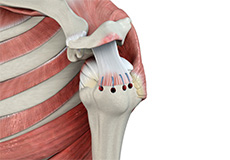
Rotator Cuff Repair
Rotator cuff tears are commonly caused by acute injuries or degenerative changes that occur slowly with age or overuse. Orthopedic Institute of North Texas (OINT) provides diagnosis and individualized nonoperative and operative treatments for the shoulder including rotator cuff repair in Baylor Frisco.
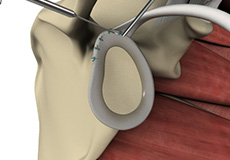
SLAP Repair
Repeated use of the shoulder while throwing or a fall onto the shoulder can result in a SLAP (superior labrum anterior and posterior) tear or injury. Orthopedic Institute of North Texas (OINT) provides diagnosis and individualized nonoperative and operative treatments for the shoulder including SLAP repair in Baylor Frisco.
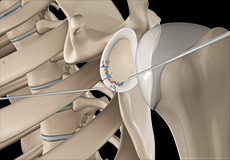
Arthroscopic Bankart Repair
Young people who have sustained a dislocation of the shoulder may experience a specific type of labral tear called a Bankart tear. The condition usually occurs during a shoulder injury. Orthopedic Institute of North Texas (OINT) provides diagnosis and individualized nonoperative and operative treatments for the shoulder including arthroscopic Bankart repair in Baylor Frisco.
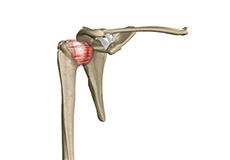
Arthroscopic Frozen Shoulder Release
An arthroscopic frozen shoulder release is a minimally-invasive shoulder surgery performed to relieve pain and restore normal function using a special instrument called an “arthroscope”.
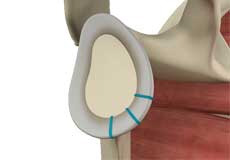
Shoulder Stabilization
Frequent dislocations of the shoulder joint can lead to chronic shoulder instability. Surgery to stabilize the shoulder may be recommended when conservative treatment options fail.
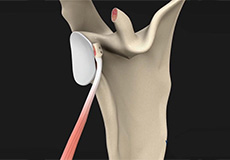
Latarjet Procedure
The Latarjet procedure is an advanced procedure to treat shoulder instability caused by lack of bony support in the shoulder joint. Orthopedic Institute of North Texas (OINT) provides diagnosis and individualized nonoperative and operative treatments including the Latarjet procedure in Baylor Frisco.
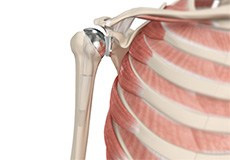
Shoulder Joint Replacement
Arthritis of the shoulder can cause pain, swelling and stiffness in the joint. The condition is treated by removing the damaged articulating parts and replacing them with prostheses. Orthopedic Institute of North Texas (OINT) provides expert diagnosis and individualized non-operative and operative treatments for the shoulder including shoulder joint replacement in Baylor Frisco.

Reverse Shoulder Replacement
Individuals with rotator cuff tear arthropathy (occurrence of shoulder arthritis and rotator cuff tear), a fully torn rotator cuff that is difficult to repair or prior failed shoulder replacement are candidates for reverse shoulder replacement.
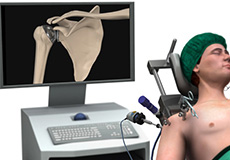
Minimally Invasive Shoulder Joint Replacement
The shoulder is a ball and socket joint that allows various arm movements. The head of the upper arm bone (humerus) articulates with the glenoid cavity of the shoulder bone (scapula). The two articulating surfaces of the bones are covered with cartilage which prevents friction between the moving bones.
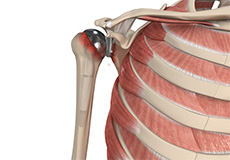
Revision Shoulder Replacement
Persistent pain, infection, stiffness, weakness, instability, hardware loosening, malposition or fracture after a total shoulder replacement may necessitate revision surgery. Orthopedic Institute of North Texas (OINT) provides expert diagnosis and individualized nonoperative and operative treatments for the shoulder including revision shoulder replacement in Baylor Frisco.

Am I A Candidate For Shoulder Replacement?
Shoulder replacement is a surgical procedure where the damaged parts of your shoulder are removed and replaced with artificial parts known as prostheses.
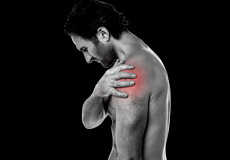
Failed Shoulder Surgery
Failed shoulder surgery is a surgery that did not meet expectations and resulted in recurring pain or other unwanted symptoms. All surgeries are associated with risks, some have a higher risk than others. The most commonly reported failed shoulder surgeries include rotator cuff repairs and shoulder stabilization for shoulder instability.
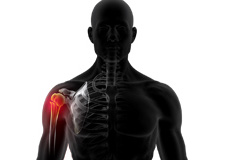
Shoulder Fracture Care
A break in the bone that makes up the shoulder joint is called a shoulder fracture. The clavicle (collarbone) and end of the humerus (upper arm bone) closest to the shoulder are the bones that usually are fractured. The scapula, or shoulder blade, is not easily fractured because of its protective cover of surrounding muscles and chest tissue.

Orif Of The Scapula Fractures
Scapular (shoulder blade) fractures are usually the result of intense trauma such as a high-speed motor vehicle accident, a fall from a height onto one's back or a fall on an outstretched arm. Orthopedic Institute of North Texas (OINT) provides diagnosis and individualized nonoperative and operative treatments for the shoulder including ORIF of scapular fractures in Baylor Frisco.
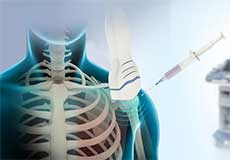
Ultrasound-guided Shoulder Injections
An ultrasound is a common imaging technique that employs high-frequency sound waves to create images of organs and other internal structures of the body. These images provide valuable information about the underlying pathology of tissues and assists with diagnosis and planning the treatment of a condition.
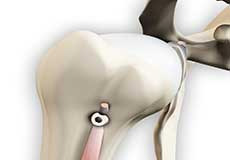
Proximal Biceps Tenodesis
Proximal biceps tenodesis is the surgical reattachment of a torn proximal biceps tendon, which connects the upper part of your biceps muscle to the shoulder.

Arthroscopic Acromioplasty
Acromioplasty is the surgical removal of a small part of the surface of the acromion (bony process on your shoulder blade). The shoulder joint is made up of a ball and socket joint, where the head of the humerus (upper arm bone) articulates with the socket of the scapula (shoulder blade), which is called the glenoid.
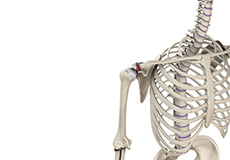
Acromioclavicular (Ac) Joint Reconstruction
The acromioclavicular (AC) joint is one of the joints present within your shoulder. It is formed between a bony projection at the top of the shoulder blade (acromion) and the outer end of the clavicle (collarbone). The joint is enclosed by a capsule and supported by ligaments.
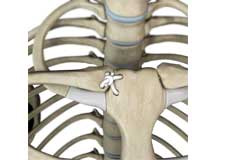
Sternoclavicular Joint Reconstruction
Sternoclavicular joint reconstruction is a surgical procedure employed to repair and restore full function of a damaged sternoclavicular joint.

Latissimus Dorsi Tendon Transfer
Latissimus dorsi tendon transfer is a surgical procedure performed to reconstruct the irreparable rotator cuff tears in your shoulder. The procedure typically involves detaching the latissimus dorsi tendon from its original location and transferring it to the shoulder to repair the rotator cuff.
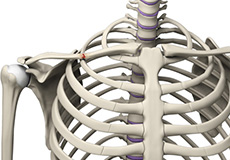
Distal Clavicle Excision
Distal clavicle excision is a procedure which involves removal of the outer end of the clavicle (collarbone) to treat shoulder pain and disability due to arthritis or impingement.

Pectoralis Major Tears/Repairs
The pectoralis muscle is a large fan-shaped muscle comprised of the pectoralis major and pectoralis minor muscles that stretch from the armpit to the collarbone and down across the lower chest region on both sides of the chest. The two sides of the chest connect at the breastbone or sternum.

Bony Instability Reconstruction Of The Shoulder
The shoulder is the most flexible joint in the body. Injury and trauma can tear or stretch the labrum and/or ligaments, causing loosening and instability of the shoulder joint which can lead to partial or complete dislocation of the joint.

Open Glenoid Bone Grafting
The glenoid, also called the glenoid cavity or glenoid fossa, is a shallow depression in the shoulder blade (scapula) that connects the upper arm bone (humerus) with the collar bone (clavicle).

Revision Open Labral Repair (Revision Bankart)
Revision open labral repair, also known as a revision Bankart surgery, is an open surgery performed to stabilize the shoulder joint after an unsuccessful primary labral repair surgery that may have been done either arthroscopically or as open surgery.

Lower Trapezius Tendon Transfer
Lower trapezius tendon transfer is a surgical procedure to treat massive, irreparable, posterosuperior rotator cuff tears of the shoulder.
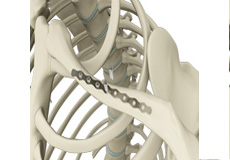
ORIF of the Clavicle Fractures
A clavicle fracture refers to a broken collarbone and is a common injury associated with contact sports such as football and martial arts, as well as impact sports such as motor racing. A direct blow over the shoulder, a fall on an outstretched arm, or a motor vehicle accident may also cause the clavicle bone to break.
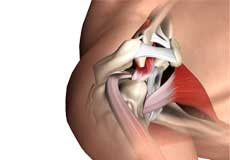
Subacromial Decompression
Subacromial decompression is a surgical procedure performed for the treatment of a condition called shoulder impingement. In shoulder impingement, the degree of space between the rotator cuff tendon and shoulder blade is decreased due to irritation and swelling of the bursa or due to development of bone spurs.
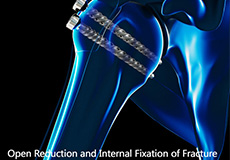
Periprosthetic Shoulder Fracture Fixation
A periprosthetic shoulder fracture is a fracture that occurs in the bone adjacent to a shoulder prosthesis.
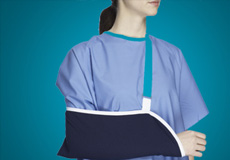
Non-surgical Shoulder Treatments
Shoulder injuries can often be treated by non-surgical methods including the following:

Cirugía de Reparación del Manguito Rotador
Para ayudarle a conversar con su cirujano ortopédico sobre la cirugía de reparación del manguito rotador como una opción de tratamiento, aquí tiene un desglose de este procedimiento quirúrgico.

Cirugía de Reparación de Lesión Labral de Anterior a Posterior
Para ayudarle a conversar con su cirujano ortopédico sobre la cirugía de reparación de Lesión Labral de Anterior a Posterior como una opción de tratamiento para la lesión de hombro, aquí tiene un desglose de este procedimiento quirúrgico.

Reparación Artroscópica de Bankart
Para ayudarle a conversar con su cirujano ortopédico sobre la cirugía de reparación artroscópica de Bankart como una opción de tratamiento para la luxación de hombro, aquí tiene un desglose de este procedimiento quirúrgico.

Liberación Artroscópica de Hombro Congelado
Una liberación artroscópica de hombro congelado es una cirugía de hombro mínimamente invasiva realizada para aliviar el dolor y restaurar la función normal utilizando un instrumento especial llamado “artroscopio”.

Estabilización de Hombro
Las dislocaciones frecuentes de la articulación del hombro pueden llevar a una inestabilidad crónica del hombro. La cirugía para estabilizar el hombro puede ser recomendada cuando las opciones de tratamiento conservador fallan.

Procedimiento de Latarjet
El procedimiento de Latarjet es un procedimiento avanzado para tratar la inestabilidad del hombro causada por la falta de soporte óseo en la articulación del hombro. El Instituto Ortopédico del Norte de Texas (OINT) ofrece diagnóstico y tratamientos individualizados no quirúrgicos y quirúrgicos, incluyendo el procedimiento de Latarjet en Baylor Frisco.

Reemplazo de la Articulación del Hombro
La artritis del hombro puede causar dolor, hinchazón y rigidez en la articulación. La condición se trata eliminando las partes articulares dañadas y reemplazándolas con prótesis. El Instituto Ortopédico del Norte de Texas (OINT) ofrece diagnóstico experto y tratamientos individualizados no quirúrgicos y quirúrgicos para el hombro, incluyendo el reemplazo de la articulación del hombro en Baylor Frisco.

Cirugía de Reemplazo Reverso de Hombro
Para ayudarle a conversar sobre la cirugía de reemplazo reverso de hombro como una opción de tratamiento para su lesión de hombro con su cirujano ortopédico, aquí hay un desglose de este procedimiento quirúrgico.

Reemplazo de Articulación de Hombro Mínimamente Invasivo
El hombro es una articulación de bola y cavidad que permite diversos movimientos del brazo. La cabeza del hueso del brazo superior (húmero) se articula con la cavidad glenoidea del hueso del hombro (escápula). Las dos superficies articulares de los huesos están cubiertas con cartílago, lo que previene la fricción entre los huesos en movimiento.

Reemplazo de Hombro de Revisión
El dolor persistente, infección, rigidez, debilidad, inestabilidad, aflojamiento del implante, mala posición o fractura después de un reemplazo total de hombro puede requerir una cirugía de revisión. Instituto Ortopédico del Norte de Texas (OINT) proporciona diagnóstico experto y tratamientos individualizados no quirúrgicos y quirúrgicos para el hombro, incluyendo reemplazo de hombro de revisión en Baylor Frisco.

¿Soy Candidato para un Reemplazo de Hombro?
El reemplazo de hombro es un procedimiento quirúrgico en el cual las partes dañadas de su hombro se eliminan y se reemplazan con partes artificiales conocidas como prótesis.

Cirugía de Hombro Fallida
La cirugía de hombro fallida es una cirugía que no cumplió con las expectativas y resultó en dolor recurrente u otros síntomas no deseados. Todas las cirugías están asociadas con riesgos, algunas tienen un riesgo más alto que otras. Las cirugías de hombro fallidas más comúnmente reportadas incluyen reparaciones del manguito rotador y estabilización del hombro para la inestabilidad del hombro.

Cuidado de Fracturas de Hombro
Una fractura en el hueso que forma la articulación del hombro se llama fractura de hombro. La clavícula (hueso de la clavícula) y el extremo del húmero (hueso de la parte superior del brazo) más cercano al hombro son los huesos que suelen fracturarse. La escápula, o omóplato, no se fractura fácilmente debido a su cobertura protectora de músculos circundantes y tejido del pecho.

Reducción Abierta y Fijación Interna de las Fracturas de Escápula
Las fracturas de la escápula (omóplato) suelen ser el resultado de un trauma intenso, como un accidente automovilístico a alta velocidad, una caída desde una altura sobre la espalda o una caída sobre un brazo extendido. El Instituto Ortopédico del Norte de Texas (OINT) ofrece diagnóstico y tratamientos individualizados no quirúrgicos y quirúrgicos para el hombro, incluyendo Reducción Abierta y Fijación Interna de fracturas de escápula en Baylor Frisco.

Inyecciones de Hombro Guiadas por Ultrasonido
Un ultrasonido es una técnica de imagen común que emplea ondas sonoras de alta frecuencia para crear imágenes de los órganos y otras estructuras internas del cuerpo. Estas imágenes proporcionan información valiosa sobre la patología subyacente de los tejidos y ayudan con el diagnóstico y la planificación del tratamiento de una condición.

Tenodesis Proximal del Bíceps
La tenodesis proximal del bíceps es la reimplantación quirúrgica de un tendón proximal del bíceps desgarrado, el cual conecta la parte superior de su músculo bíceps con el hombro.

Acromioplastia Artroscópica
La acromioplastia es la eliminación quirúrgica de una pequeña parte de la superficie del acromion (proceso óseo en su omóplato). La articulación del hombro está formada por una articulación de bola y cavidad, donde la cabeza del húmero (hueso de la parte superior del brazo) se articula con la cavidad de la escápula (omóplato), llamada glenoides.

Reconstrucción de la Articulación Acromioclavicular (AC)
La articulación acromioclavicular (AC) es una de las articulaciones presentes dentro de su hombro. Se forma entre una proyección ósea en la parte superior del omóplato (acromion) y el extremo externo de la clavícula (hueso de la clavícula). La articulación está encerrada por una cápsula y sostenida por ligamentos.

Reconstrucción de la Articulación Esternoclavicular
La reconstrucción de la articulación esternoclavicular es un procedimiento quirúrgico empleado para reparar y restaurar la función completa de una articulación esternoclavicular dañada.

Transferencia del Tendón Dorsal Ancho
La transferencia del tendón dorsal ancho es un procedimiento quirúrgico realizado para reconstruir los desgarros irreparables del manguito rotador en su hombro. El procedimiento generalmente implica desprender el tendón dorsal ancho de su ubicación original y transferirlo al hombro para reparar el manguito rotador.

Escisión de Clavícula Distal
La escisión de clavícula distal es un procedimiento que implica la extracción del extremo externo de la clavícula (hueso de la clavícula) para tratar el dolor y la discapacidad del hombro debido a la artritis o al pinzamiento.

Desgarros/Reparaciones del Pectoral Mayor
El pectoral es un músculo grande en forma de abanico que incluye los músculos pectoral mayor y pectoral menor y se extiende desde la axila hasta la clavícula y hacia abajo a través de la región inferior del pecho en ambos lados del tórax. El pectoral mayor ayuda a rotar el brazo hacia adentro y acercarlo al cuerpo.

Reconstrucción de la Inestabilidad Ósea del Hombro
La reconstrucción de la inestabilidad ósea del hombro es un procedimiento quirúrgico para tratar la inestabilidad del hombro mediante la reubicación de un fragmento de hueso con un tendón adjunto al hombro.

Injerto Óseo Abierto de la Glenoides
La glenoides, también llamada cavidad glenoidea o fosa glenoidea, es una depresión poco profunda en la escápula (omóplato) que conecta el hueso del brazo (húmero) con la clavícula.

Reparación Abierta de Labrum en Revisión (Revisión de Bankart)
La reparación abierta de labrum en revisión, también conocida como cirugía de revisión de Bankart, es una cirugía abierta realizada para estabilizar la articulación del hombro después de una cirugía primaria de reparación del labrum que no tuvo éxito, la cual puede haber sido realizada de forma artroscópica o como cirugía abierta.

Transferencia del Tendón del Trapecio Inferior
La transferencia del tendón del trapecio inferior es un procedimiento quirúrgico para tratar desgarros masivos, irreparables y posterosuperiores del manguito rotador del hombro.

Cirugía de Clavícula: Reducción abierta y fijación interna para Reparar Fracturas Graves de la Clavícula
Una fractura de clavícula es una lesión común que ocurre cuando se rompe la clavícula. La clavícula o hueso de la correa es un hueso situado horizontalmente, que conecta el esternón (hueso del pecho) con el húmero o hueso del brazo superior, en ambos lados del cuerpo.

Descompresión Subacromial
La descompresión subacromial es un procedimiento quirúrgico realizado para el tratamiento de una condición llamada pinzamiento del hombro. En el pinzamiento del hombro, el espacio entre el tendón del manguito rotador y el omóplato se reduce debido a la irritación e inflamación de la bursa o al desarrollo de espolones óseos.

Fijación de Fractura Periprotésica de Hombro
Una fractura periprotésica de hombro es una fractura que ocurre en el hueso adyacente a una prótesis de hombro.

Tratamientos No Quirúrgicos de Hombro
Las lesiones de hombro a menudo pueden tratarse mediante métodos no quirúrgicos que incluyen lo siguiente:
